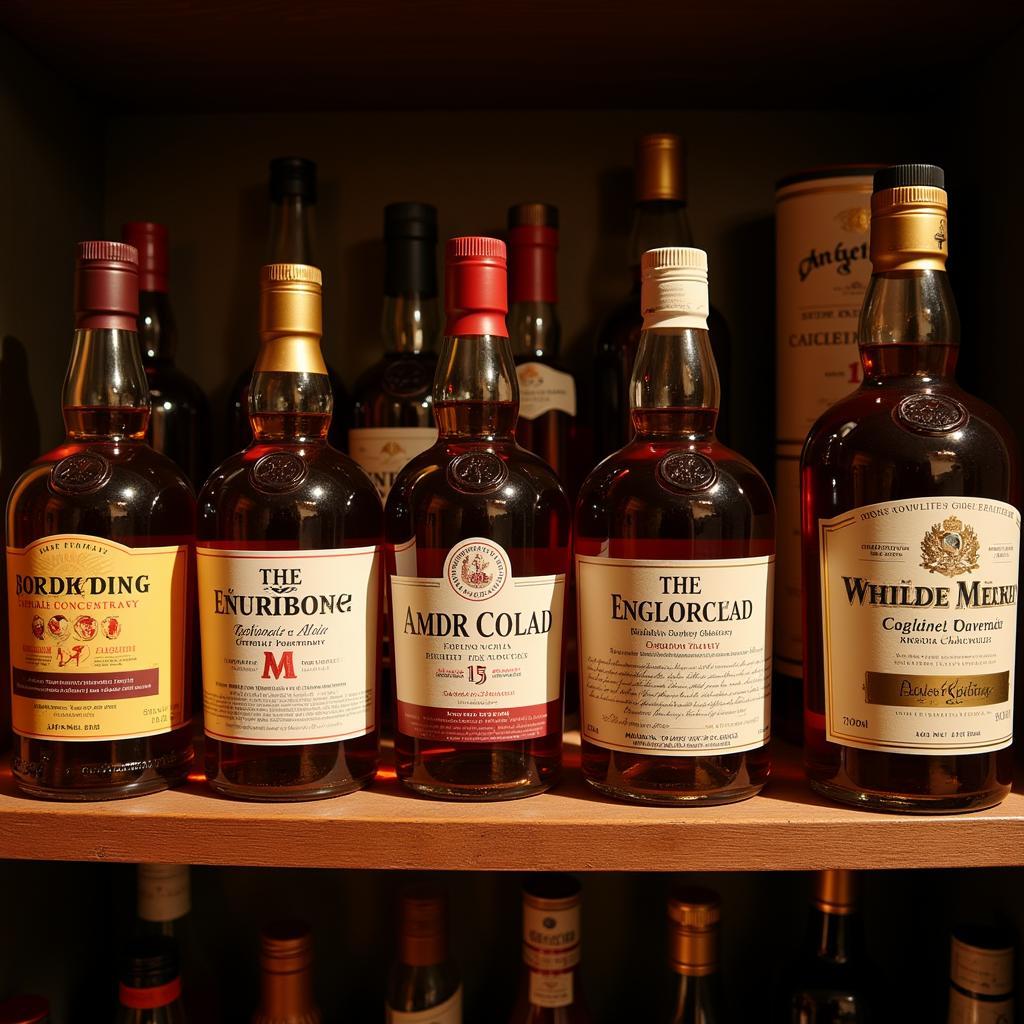Scotch Whisky Society Codes can appear as a cryptic language to the uninitiated. These enigmatic symbols and abbreviations printed on bottles from independent bottlers like the Scotch Malt Whisky Society (SMWS) hold a world of information for those in the know. They offer tantalizing clues about the whisky’s origins, flavor profile, and overall character. This guide aims to demystify these codes, empowering you to navigate the world of independent bottlings with confidence and discover your next dram with informed enthusiasm.
Unlocking the Secrets: A Breakdown of the Code
The beauty of Scotch whisky society codes lies in their standardization. While each society has its unique nuances, the underlying structure remains consistent, making it easy to decipher the labels once you understand the basics. Generally, the code is structured as follows:
- Society Initials: This identifies the independent bottler. For instance, “SMWS” signifies the Scotch Malt Whisky Society.
- Distillery Code: Often a numerical code, this pinpoints the distillery where the whisky was produced. Each society has its own numerical system for distilleries, often shrouded in secrecy to maintain an element of surprise and discovery.
- Cask Number: This unique identifier indicates the specific cask from which the whisky was bottled. It signifies the individual nature of each bottling, as each cask imparts its own distinct character to the spirit.
- Bottling Information: This section may include the year of distillation, bottling date, and bottle number, offering insight into the whisky’s age and rarity.
The Thrill of Discovery: What the Codes Reveal
The true allure of Scotch whisky society bottlings lies in the element of exploration they offer. The codes, rather than being restrictive, serve as intriguing hints, guiding you towards a deeper appreciation of the whisky. Here’s what you can glean from deciphering the code:
- Distillery Character: While the distillery code may not reveal the distillery’s name outright, whisky enthusiasts often develop a keen understanding of the characteristic flavor profiles associated with each code. For example, a “3.25” from the SMWS might be known for its sherried richness, while a “76” could indicate a peaty, maritime character.
- Cask Influence: The cask number reveals the specific cask used for maturation, highlighting the critical role of the cask in shaping the final flavor profile. A whisky matured in a first-fill sherry cask will differ significantly from one aged in a refill bourbon cask, even if they originate from the same distillery.
- Bottling Specificity: Details like the bottling date and bottle number provide context to the bottling’s rarity and potential evolution in the bottle. A whisky bottled decades ago will offer a snapshot of flavor from a bygone era.
 Whisky Society Bottles on Display
Whisky Society Bottles on Display
Beyond the Basics: Embracing the Experience
Understanding the codes is merely the first step in appreciating Scotch whisky society bottlings. The true enjoyment lies in embracing the sense of discovery and allowing the whisky to tell its own story. Here are some tips for enhancing your experience:
- Engage Your Senses: Before delving into the code, take a moment to appreciate the whisky’s color, aroma, and taste. Note down your initial impressions.
- Consult Tasting Notes: Most societies provide tasting notes, offering poetic descriptions of the whisky’s flavor profile. Use these notes as a guide, comparing your own perceptions to those of the experts.
- Join the Conversation: Independent bottlers often foster a vibrant community of whisky enthusiasts. Engage in online forums, attend tasting events, and share your own discoveries with fellow enthusiasts.
Scotch Whisky Society Codes: A Toast to Exploration
In a world dominated by mass-produced spirits, independent bottlers like the Scotch Malt Whisky Society offer a refreshing alternative. Their enigmatic codes, far from being intimidating, invite us to embrace the joy of exploration, unravel the complexities of whisky, and savor the unique character of each bottle.
So, the next time you encounter a bottle adorned with these seemingly cryptic symbols, don’t shy away. Embrace the challenge, decipher the code, and embark on a journey of discovery, one sip at a time. You might just stumble upon your new favorite dram.
FAQ:
- What is the purpose of independent bottlers? Independent bottlers source casks from various distilleries, often selecting exceptional or unique barrels. They then bottle these whiskies independently, offering a diverse range of flavors and expressions not typically found from the distilleries themselves.
- Are all Scotch whisky society bottlings single cask? While many independent bottlers specialize in single cask bottlings, some also release small batch releases, blending whiskies from a limited number of casks to create a specific flavor profile.
- Do I need to be a member to purchase from a whisky society? Some societies, like the SMWS, operate on a membership basis, while others offer their bottlings to the public.
- Why are distillery names often not disclosed on independent bottlings? This practice serves several purposes. It allows enthusiasts to explore whiskies based on flavor profiles rather than brand recognition, protects the identity of the source distillery, and adds an element of mystery and discovery.
- Where can I find more information about specific whisky society codes? Online resources, whisky forums, and society websites often provide detailed information about distillery codes and tasting notes for their bottlings.
Looking for more insights into the world of whisky? Explore these related topics:
- The Art of Whisky Tasting: A Beginner’s Guide
- Exploring the Regions of Scotch Whisky
- Understanding Cask Finishes and Their Influence on Flavor
Need Assistance? Our team is here to help!
Contact us:
- Phone: 02043854663
- Email: [email protected]
- Address: Khu 34, Bac Giang, 260000, Vietnam
We have a 24/7 customer service team ready to assist you.